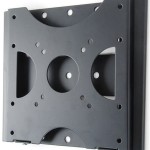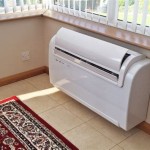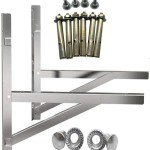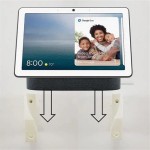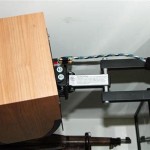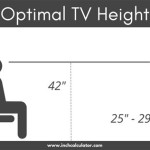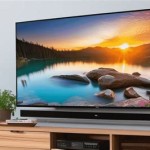Determining the Standard Wall Mounted TV Height
Mounting a television on a wall offers numerous aesthetic and practical advantages, including space saving and improved viewing angles. However, achieving optimal viewing comfort relies heavily on installing the television at the correct height. Deviating from standard height recommendations can lead to neck strain, eye fatigue, and a less enjoyable viewing experience. Several factors influence the ideal mounting height, encompassing viewing distance, furniture height, and individual preferences. This article will provide a comprehensive overview of the considerations necessary to determine the appropriate height for a wall-mounted television.
Understanding the Importance of Ergonomics
Ergonomics plays a crucial role in determining the ideal wall-mounted TV height. Poor posture and prolonged neck strain can result from viewing a television positioned too high or too low. The goal is to position the screen at a height that allows for a neutral head and neck position, minimizing discomfort during extended viewing sessions. This requires careful consideration of the viewing environment and the typical posture adopted while watching television. An incorrect television height can lead to musculoskeletal problems and detract from the intended purpose of entertainment and relaxation.
The human eye naturally looks slightly downward. Therefore, placing the center of the television screen at or slightly below eye level when seated is generally considered optimal. This minimizes the need to tilt the head upwards, which can cause neck strain over time. However, individual variations in body height and sitting posture necessitate adjustments to this general guideline. The precise height that achieves a neutral head and neck position will vary from person to person.
Furthermore, the size of the television itself influences the viewing angle. Larger screens necessitate a greater viewing distance to maintain a comfortable viewing experience. The height of the television must be adjusted proportionally to account for the screen size and the viewing distance. Larger screens, mounted too high, will require a more pronounced upward head tilt, exacerbating potential neck strain. Therefore, a comprehensive assessment of the viewing environment is crucial before finalizing the mounting height.
Calculating the Ideal Viewing Height
While generalizations about standard television heights exist, a more precise calculation is necessary for optimal viewing. The most common recommendation involves positioning the center of the television screen at eye level when seated. To determine this height, measure the distance from the floor to the viewer's eyes while seated in their typical viewing position. This measurement provides a baseline for positioning the center of the television screen.
However, this baseline measurement must be adjusted based on the size of the television. Television sizes are typically measured diagonally. To determine the center point of the screen, divide the diagonal measurement in inches by two. This provides the distance from the bottom edge of the television to its center. Add this value to the desired eye level height to determine the mounting height for the bottom edge of the television. This method ensures that the screen's center is aligned with the viewer's eye level.
For example, if the viewer's eye level is 42 inches from the floor and the television is a 65-inch model, the calculation would proceed as follows: 65 inches / 2 = 32.5 inches. Then, 42 inches (eye level) - 32.5 inches (distance to center) = 9.5 inches. This indicates that the bottom edge of the television should be mounted approximately 9.5 inches from the floor to achieve optimal viewing height. This calculation accommodates both the viewer's height and the television size, providing a more customized mounting solution.
It is also important to consider the presence of any entertainment consoles or furniture beneath the television. These elements can affect the visual plane and necessitate adjustments to the mounting height. If the television is mounted above a tall entertainment console, the mounting height may need to be increased to ensure that the screen remains visible and unobstructed. A visual assessment of the viewing environment is necessary to account for these potential obstructions.
Addressing Specific Viewing Environments
Different viewing environments require tailored approaches to determining the appropriate wall-mounted television height. Factors such as bedroom layouts, kitchen configurations, and multi-purpose living spaces necessitate customized solutions. In bedrooms, viewers are often reclined or lying down, which significantly alters the optimal viewing angle. In such cases, the television may need to be mounted higher to compensate for the reclining posture. The goal remains to minimize neck strain; therefore, the height should allow for comfortable viewing without excessive head tilting.
In kitchens, televisions are often mounted higher to ensure visibility above countertops and appliances. This can be especially true if the television is intended for viewing while standing. However, the increased height must be balanced against the potential for neck strain. Tilting the television downwards can help to improve the viewing angle and reduce discomfort. Adjustable mounting brackets that allow for vertical tilting are particularly useful in kitchen environments.
Multi-purpose living spaces often present the most challenging scenarios, as the television may be viewed from a variety of seating positions and distances. In these cases, a compromise may be necessary. Consider the most frequently used seating position and prioritize that viewing angle. Adjustable mounting brackets can provide flexibility, allowing the television to be tilted or swiveled to accommodate different viewing positions. Ultimately, the goal is to find a balance that provides a comfortable viewing experience for the majority of users and viewing situations.
Furthermore, the presence of ambient lighting can influence the perceived brightness and contrast of the television screen. Mounting the television in a location that minimizes glare and reflections can improve visibility and reduce eye strain. Experimenting with different mounting locations and angles can help to optimize the viewing experience in challenging lighting conditions. Window placement and the use of curtains or blinds can also impact glare and reflections. Addressing lighting concerns is an integral part of ensuring a comfortable and enjoyable viewing experience.
In summary, determining the ideal wall-mounted television height requires careful consideration of several factors, including viewer height, television size, viewing distance, seating posture, and environmental conditions. While general guidelines exist, a more personalized approach is necessary to achieve optimal viewing comfort and minimize potential strain. By accurately measuring eye level, calculating the screen's center point, and accounting for specific environmental considerations, it is possible to determine the appropriate height for any wall-mounted television installation. This comprehensive assessment will result in an improved and more enjoyable viewing experience.

How High Should A Tv Be Mounted The Plug Hellotech

Tv Mounting Height Calculator

How High Should Your Tv Be Mounted Reviews By Wirecutter

How High To Mount Tv In Bedroom For 65 Inch Television Installation Toronto

At What Height Should Your Flat Screen Be Mounted

How High Should Your Tv Be Mounted Reviews By Wirecutter

Heightfinder Sanus Vuepoint

How High To Mount The Tv Blend Looks And Comfort

Tv Height And Distance

The Perfect Position Wall Mounting Guide For Your Tv Ace Sydney Electricians

